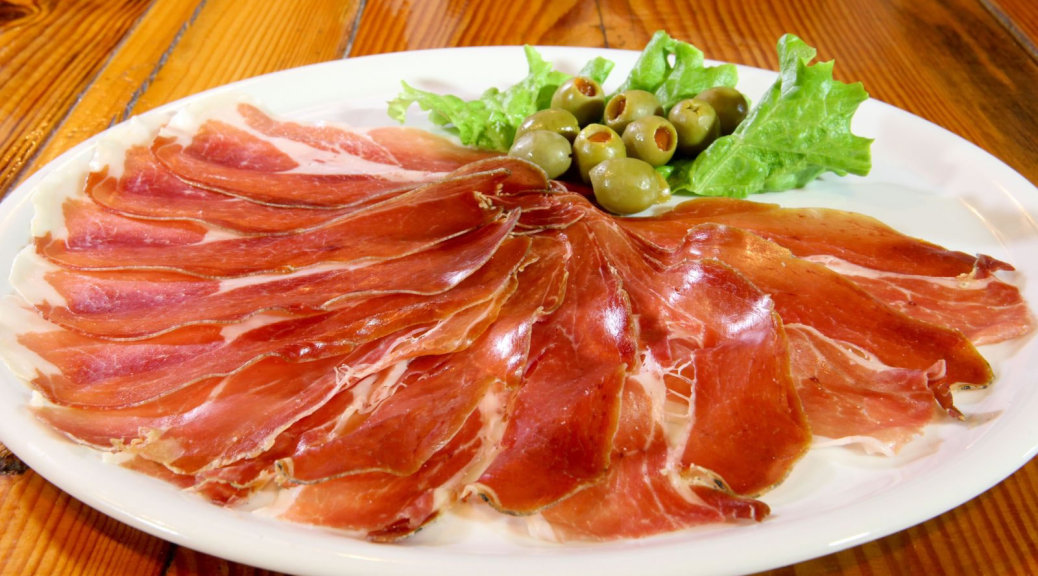This specialty is blend of traditional Dalmatian cuisine, climate and lifestyle that characterizes Dalmatia and the local population. Due to the specific taste and unique traditional way of production, this Dalmatian delicacy is considered as one of the best products of Mediterranean cuisine.
Name History
Prosciutto is a specific Mediterranean product. The term originated from the Latin word perexsiccatus, which is in Italian modified as prosciugare, meaning “completely dry”.
Production
Dalmatian prosciutto is made of pork ham from Yorkshire and Landrace breeds and their crosses. The best ham is produced from pork that weighs between 140 and 180 kilograms (between 308 and 396 pounds).
Pork ham is salting with sea salt at temperature of 4°C to 6°C and after a week you add more salt if necessary. After salting phase, follows phase of molding and it lasts between one and two weeks. Before putting it on dry, ham is protected by putting a mixture of sharp flour, fat and pepper or pork fat on it. After comes phase of smoking with flow of fresh air, this process takes from 50 to 70 days. For smoking is recommended to avoid wood with a resin. Process of drying is next and it takes about a year. The best prosciutto is considered to be those drought between year and a half and two years.
Traditional production requires that the ham is dried on the Bora wind (north-easterly wind) which dries it in a natural way, but Jugo (south-easterly wind) is needed as well, because it prevents bark from drying and cracking. In more modern mode of production, hams are dried in a chamber under controlled conditions, this method of production avoids the possibility of drying up, which can occur in adverse conditions in traditional modes of production.
This Dalmatian delicacy is usually served with hard cheese and before serving cutting requires special attention. Cutting is an art in itself and it is performed exclusively by knife which cuts ham into thin and long pieces.
